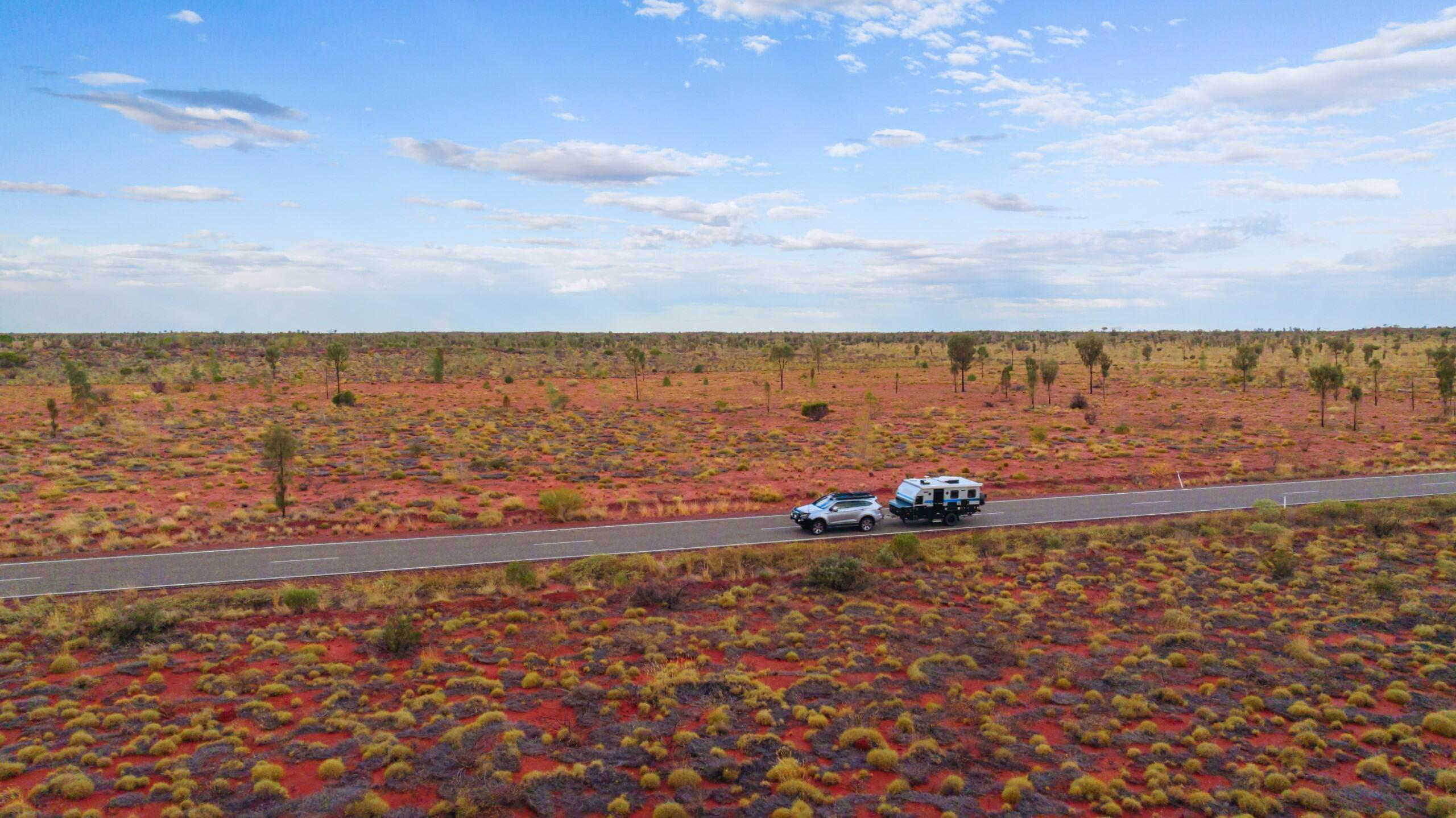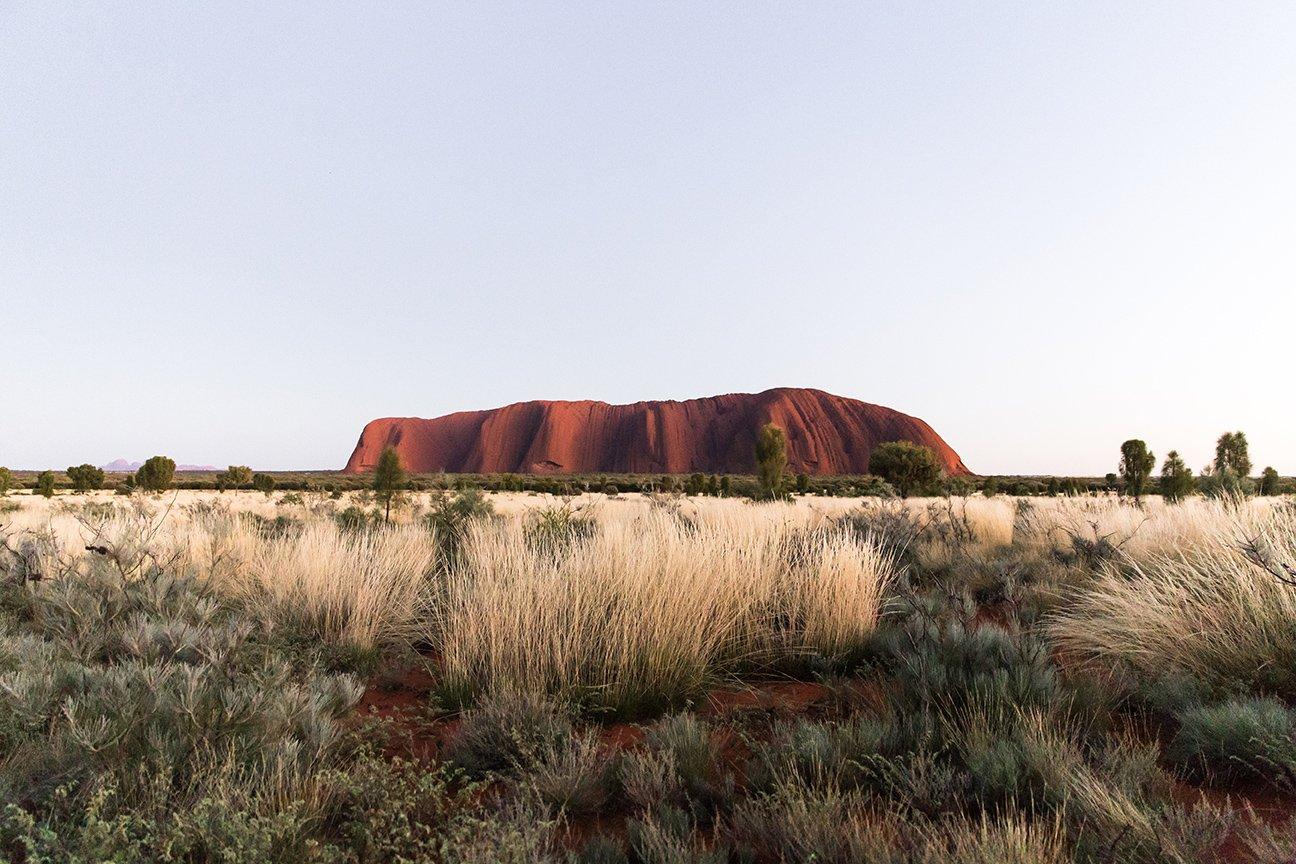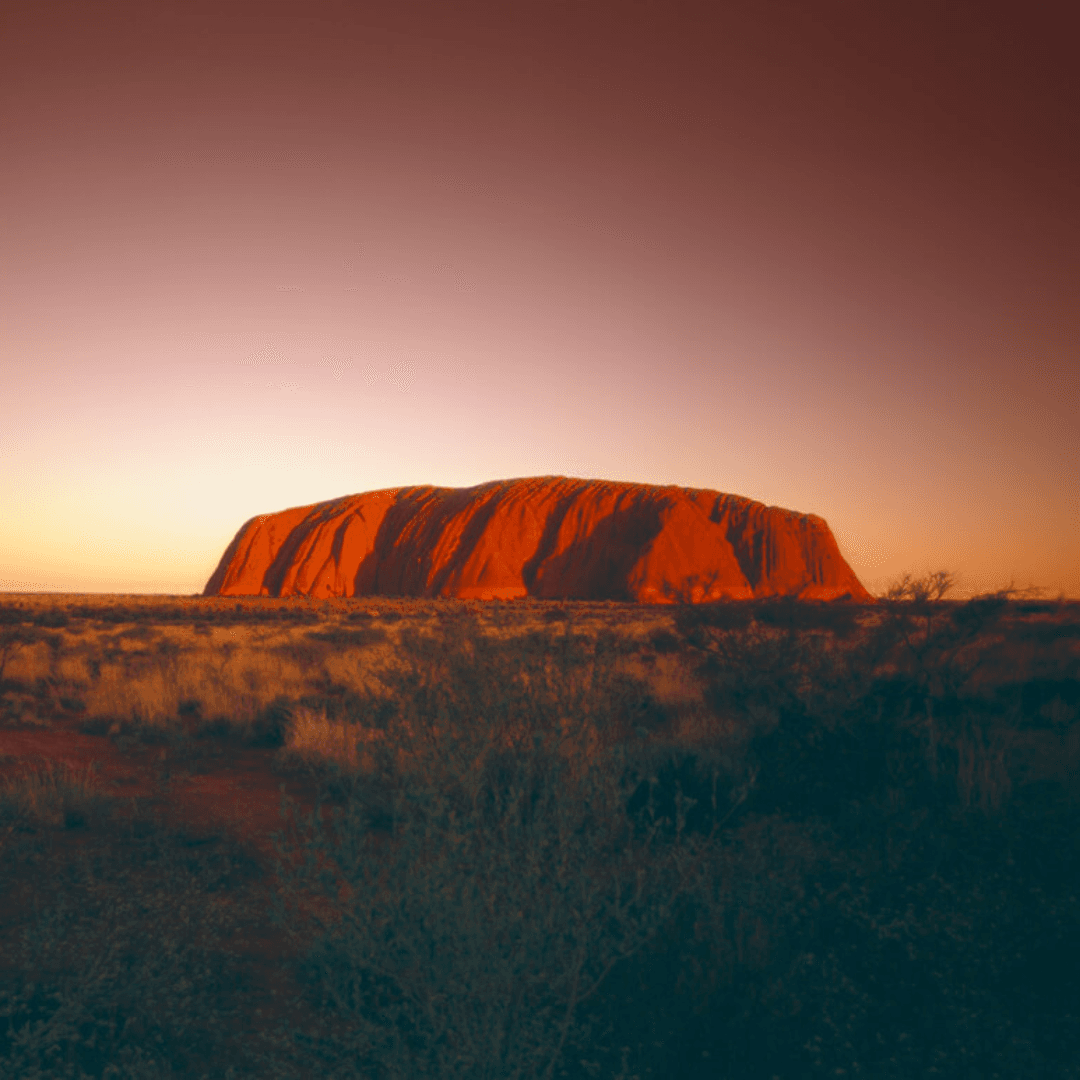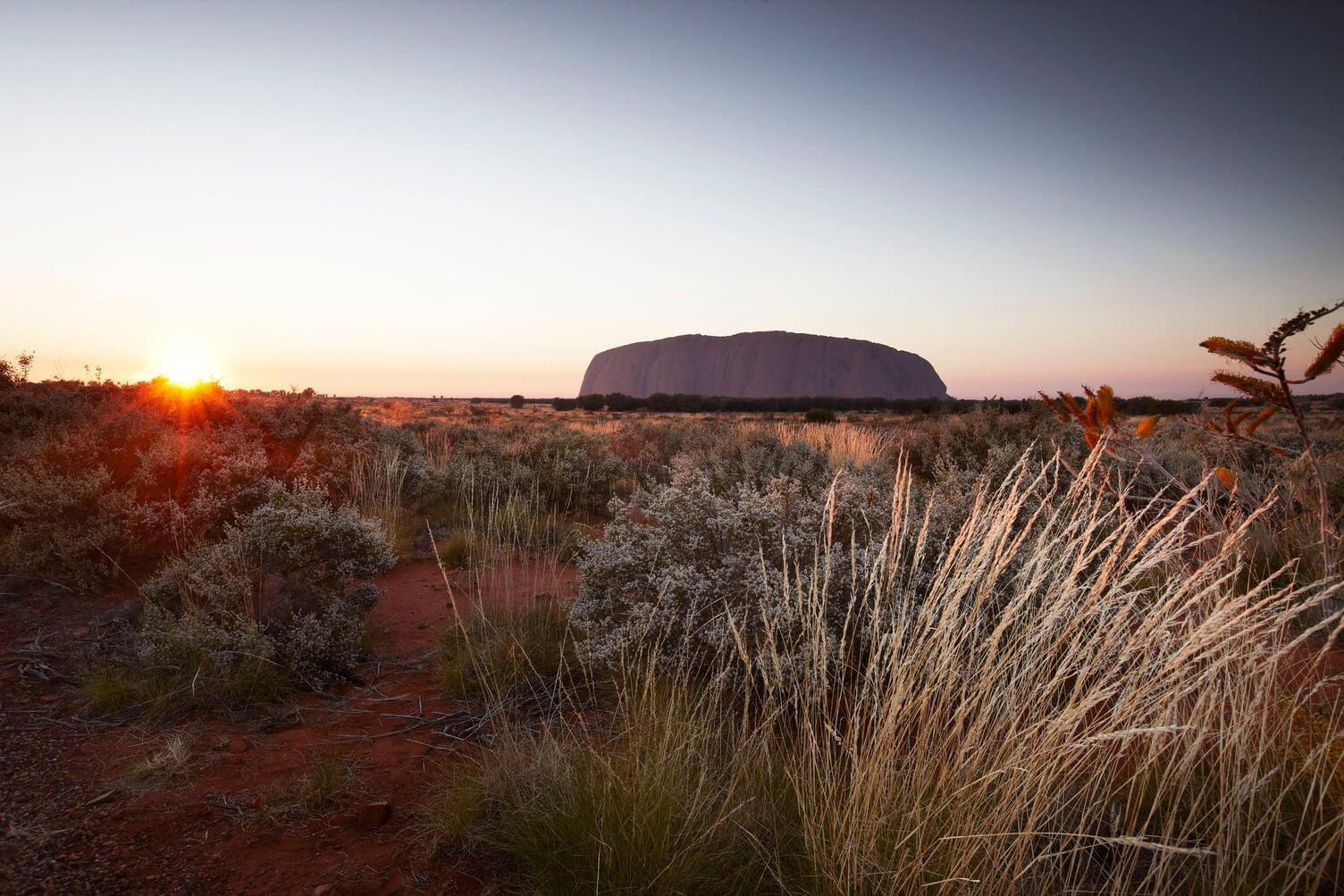The Story of Uluru
Explore the Heart of Australia. Discover the stories, spirit, and stunning landscapes of Uluru-Kata Tjuta — a place of deep cultural significance and unforgettable natural beauty.
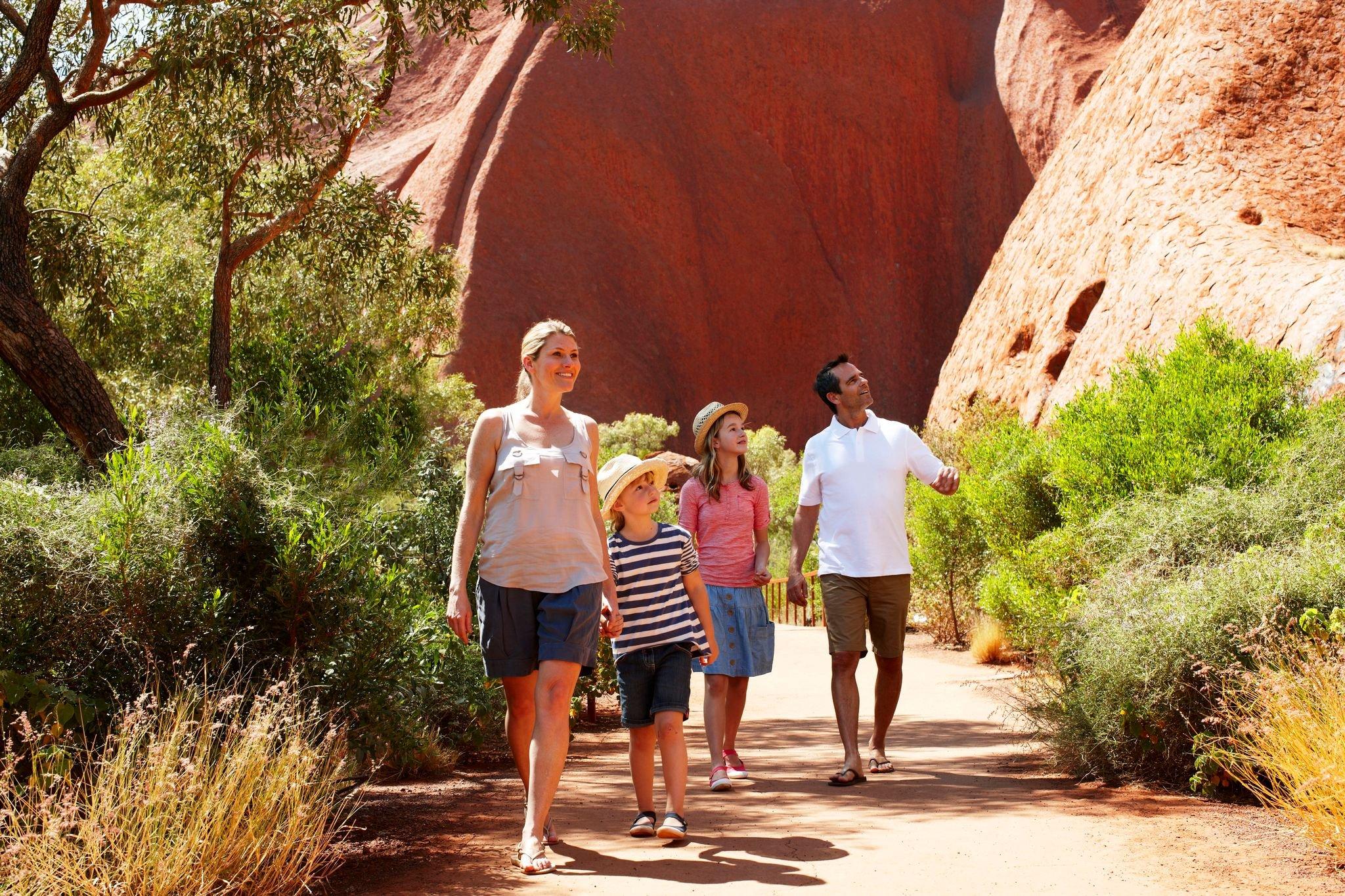
The Cultural & Spiritual Heart of Australia
Spanning more than 327,414 acres of Australia’s desert outback, Uluru-Kata Tjuta National Park is a vast, dramatic flatland of reds, oranges, and golds, seemingly straight from a movie set or perhaps even another planet. And soaring hundreds of metres above the infinite plains, as if dropped by some otherworldly presence, are two of the world’s most iconic rock formations: Uluru and Kata Tjuta.
So much more than “giant rocks”, these sacred, revered spaces have a special significance in the hearts of Australia’s Indigenous population. In fact, the Indigenous believe that Uluru and the neighbouring Kata Tjuta aren’t rocks at all, but living, breathing cultural landscapes.
How Uluru Was Formed
Uluru and Kata Tjuta stand as massive monoliths in the Australian Outback — each with a unique geological history shaped by the forces of nature. Around 550 million years ago, the region was a shallow sea. Over time, layers of mineral-rich sandstone were deposited on the ocean floor. These layers hardened and eventually formed the rock that makes up Uluru and Kata Tjuta.
Fast forward to 350 million years ago, when the sea receded, and the region experienced significant tectonic activity. The hardened sandstone was pushed upward, forming mountains. Erosion slowly wore down these mountains, creating large sediment fans, with one such fan becoming the basis for Uluru. Meanwhile, the rocks that would later become Kata Tjuta were also uplifted and eroded over time.
The region’s landscape was further shaped by the folding of the Earth’s crust, which tilted the sandstone layers nearly 90 degrees. This tilting process, combined with the erosion of surrounding softer rock, left Uluru and Kata Tjuta standing tall, as the harder sandstone eroded more slowly than the surrounding rock.
Now one of the largest monoliths in the world, Uluru rises 348 metres above the desert floor, with a circumference of 9.4 kilometres. Much like an iceberg, it also extends over 2.5 kilometres below ground — proving once again that there’s far more to this place than meets the eye.
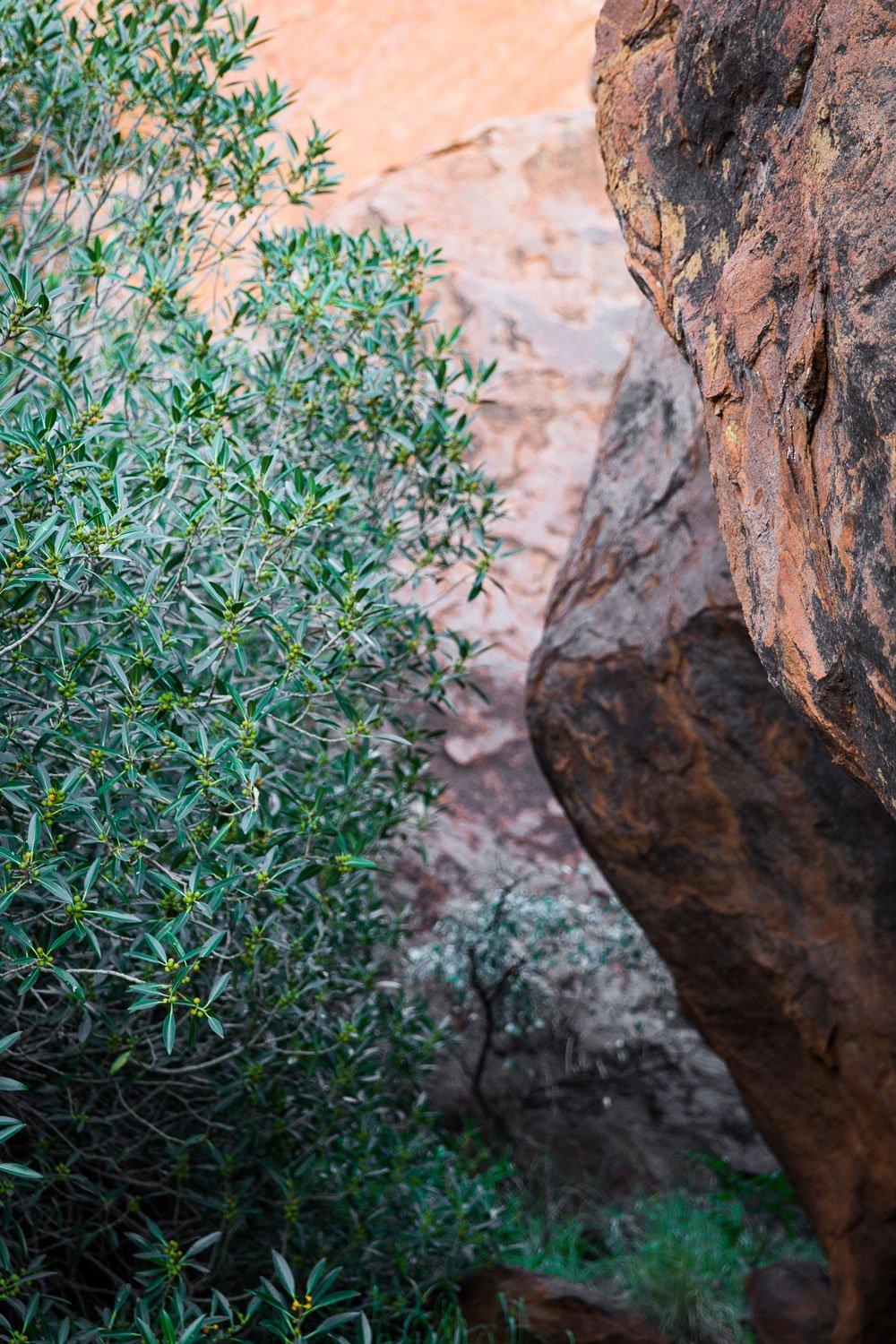

A Brief History of Uluru
Uluru has long been a place of spiritual connection for Indigenous Australians, who have lived in the area for thousands of years.
According to Indigenous history, the Central Australian landscape dates back to the beginning of time, when three ancestors — Mala (Rufous-Hare Wallaby), Kuniya (Woma Python), and Liru (poisonous snake) — played an important role in creating the land. As the Traditional Owners of the area, the Anangu (pronounced arn-ung-oo) believe that the spirits of these ancestors continue to dwell within Uluru and the surrounding landscape, making it a place of deep cultural and spiritual significance for millennia.
Learn more about the importance of Uluru to Australian Indigenous culture.
In far more recent times, Uluru was first located by European explorers in 1873, when William Gosse and William Giles arrived in the region. Gosse called Uluru “Ayers Rock” after the Chief Secretary of South Australia at the time, Sir Henry Ayers. Giles dubbed Kata Tjuta “The Olgas” after the then-reigning Queen Olga of Wurttemberg. In the early 1900s, the government declared ownership of the land, and it was only in 1983 that it was returned to its rightful owners.
Now listed as a UNESCO World Heritage Site, Uluru continues to be of important significance amongst Indigenous Australians — just as we try to carefully counterbalance the realities of being a popular modern-day destination.


Cultural & Spiritual Experiences at Uluru
As soon as you arrive, you’ll feel it. The cultural and spiritual heart of Australia beats a little stronger here. Exploring Uluru and Kata Tjuta means connecting with the people and places that make our part of the Outback so special. It means opportunities to get moving — by foot, by bike, or by soaring above the red rocks via helicopter. It means chances to be still and take in the sacred surroundings. It means being, well, more meaningful.
When you book your stay with us, not only can you soak in the local Anangu culture, but you’ll also enjoy a genuine Indigenous experience that helps preserve Uluru’s rich heritage and beauty. As a guest at Ayers Rock Resort, you can choose from more than 100 tours and experiences. Obviously, there’s a lot to see and do here! So, to get you started, here are our suggested Top 10 Can’t-Miss Experiences in Uluru.
Please note: At and around Uluru and Kata Tjuta, ancient Indigenous artwork tells stories of creation, law, relationships, plants, and animals. Places where significant events in the Anangu story occurred remain sacred today. The Anangu have the responsibility and obligation to care for the land. As such, there are areas where visitors are not permitted to access or photograph.
If you’re unsure of which places are considered sacred, sign up for a guided tour. Just being close to these incredible sites is a magical experience you’ll never forget.


Paint your own animal
From Sunrise to Sunset & Beyond
With dozens of tours and experiences to choose from, one way to help narrow down your options is by planning an itinerary. Not only is Uluru particularly spectacular to see at both sunrise and sunset, but the region’s low humidity and minimal artificial light make it one of the best places on Earth for stargazing. Here are a few more recommendations to fill your sunny days and starry nights!


Sunrise
Sunrise Journeys – Prepare to be awakened by awe-inspiring storytelling at the world’s most spectacular sunrise. Featuring an immersive Indigenous light show experience — and inspired by the artwork of three local Anangu artists — Sunrise Journeys will transport you through past, present and future as projected light and music moves gently across the landscape.
Desert Awakenings – Experience the tranquillity of the pre-dawn land under a canopy of stars, and watch the amazing transformation of colours and life as the desert awakens with Uluru and Kata Tjuta as your backdrop. In the company of your expert guide, Desert Awakenings is designed to introduce you to the natural and cultural landscapes of this remarkable region.
Uluru Sunrise and Kata Tjuta – Rise early to go to the sunrise viewing area in Uluru-Kata Tjuta National Park. Watch the changing colours of Uluru as the Outback awakens to the first sunlight of the day. Travel to the mystical 36 domes of Kata Tjuta and admire panoramic views of the southern side, before following a walking trail through Walpa Gorge.
Sunset
Uluru Sacred Sights and Sunset with BBQ Dinner – Learn about the native flora, fauna and intriguing cultural traditions of the Anangu, and discover an array of fascinating sacred sites around Uluru. Travel to the Uluru sunset viewing area and relax with a glass of wine and nibbles, as the sun sets over the horizon. Then, enjoy a delicious barbecue dinner under the stars.
A Night at Field of Light – This exclusive dining experience combines the “Sounds of Silence” dinner under the Outback sky with the once-in-a-lifetime Field of Light. It features magnificent views of Uluru at sunset, a bush tucker-inspired buffet, a selection of Australian wines and beers, fascinating star talk, and a self-guided walk through the Field of Light art installation.
And Beyond
Field of Light Star Pass – The experience begins with a hotel pick-up and short transfer to the remote desert location with majestic views of Uluru. You’re welcomed at an exclusive dune top just after the sun sets. Savour a selection of canapes with sparkling wine or beer, as your host provides insight into the light installation of 50,000 glass spheres that gently come to life.
Wintjiri Wiru After Dark – Take your seat in the open-air desert theatre and witness the Mala story brought to life like never before through choreographed drones, lasers and projections that illuminate the night sky. Enjoy Australian wine, cheeses, and desserts, as you immerse yourself in a living story from the world’s oldest continuous living culture.
